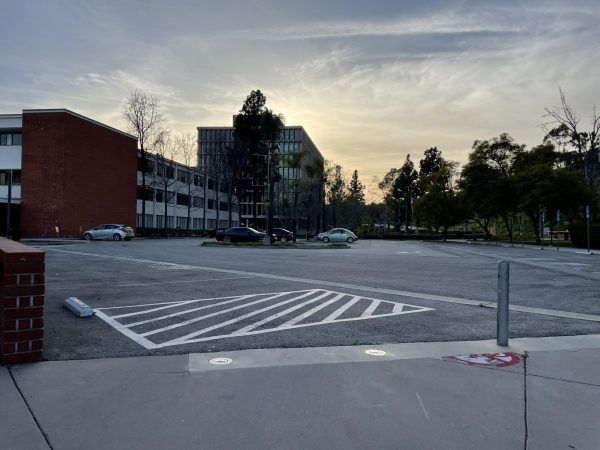‘California Dream’-Turned-Nightmare
Increase in Homelessness Puts Former South Central LA Resident at Risk
Homeless encampment outside of City Hall.
Connie Lach said she moved to California so she could enjoy the beauty of the outdoors and nature.
What she didn’t expect was that she would be living so close to it: She became homeless early last year when she had to vacate her apartment in South Central Los Angeles.
Like Lach, about 59,000 people are experiencing homelessness in Los Angeles County — a 12 percent increase over the year before, according to a report in June by the Los Angeles Homeless Services Authority (LAHSA). In the city of Los Angeles alone, the homeless population is 36,000 — a 16 percent increase over the year before, also reported by LAHSA. An estimated 18,000 women who experience homelessness face disproportionate challenges related to domestic violence and sexual assault.
Lach, who lives in Skid Row, said worse than the rats that occasionally scurry over her feet is the fear she feels being without shelter.
“I’m a woman out on these streets. I shouldn’t be here because men are trying to like come up on me,” said Lach.
The 64-year-old described being assaulted and having her possessions stolen, including her ID and money, by a group of younger women that were on San Pedro street.
Lach expressed frustration and disbelief about her circumstances considering she has “substantial” professional experience: she said her former jobs included working at the now-defunct Mesa Tribune newspaper, Mayo Clinic, and the Desert Springs Hospital Medical Center.
She said she became homeless when her “man” passed away. Since they supported each other, she could no longer afford the monthly rent, roughly $1,900.
The cost of housing has left many residents like her in a lurch.
About 600,000 people in L.A. County households spend 90 percent or more of their income on rent, according to Professor of Law Emeritus Gary Blasi, an advocate for the homeless. They’re “just one glitch away from being homeless,” he added.
Outside her small, slightly-torn black tent on East Fifth and Wall streets, Lach said the rats are one of the reasons why she filed paperwork at LAHSA for housing.
An audit released in August from the city controller’s office scrutinized LAHSA for a lackluster performance in its operations including falling short of its housing goals. The audit reported LAHSA only placed 14 percent of individuals into a shelter or bridge housing when its goal was to reach 20 percent in the 2017 to 2018 fiscal year. The goal to place assessed individuals into permanent housing was 10 percent but the group only reached 4 percent, according to the audit.
Blasi said a key reason LAHSA isn’t meeting its goals is the lack of shelters. “We’ve added some permanent supportive housing over the past five years,” said Blasi. “We have added essentially zero shelter beds in the last five years. It’s been just completely flat and that’s why those outreach workers have nothing to offer.”
LAHSA did not respond in time to a request for comment. However, after a news conference addressing the audit, LAHSA Chief Program Officer Heidi Marston said that the lack of shelter and housing is the primary deterrent to LAHSA’s progress, according to the L.A. Times.
As for Lach’s experience with LAHSA so far, she said she’s not sure and is just “waiting on them” at this point.
Lach is still hopeful about the dream that led her to California.
“I came up from Nevada because I wanted to be here at my age so I could enjoy the rest of my life with trees — green trees,” she said chuckling. “Green grass, you know, flowers, and the ocean. That makes me happy.”
Community News reporters are enrolled in JOUR 3910 – University Times. They produce stories about under-covered neighborhoods and small cities on the Eastside and South Los Angeles. Please email feedback, corrections and story tips to [email protected].












